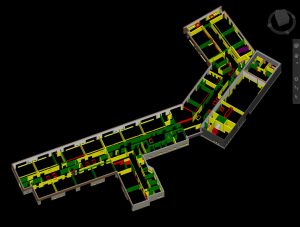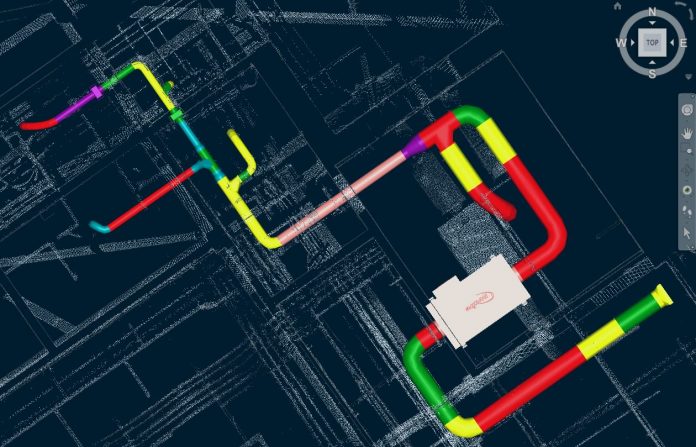Harnessing technology to verify construction progress on-site could break down adversarial silo working and foster greater cooperation across the industry, says Robert Klaschka, founding member of the Construction Verification Initiative and principal consultant at EvrBilt
The Construction Verification Initiative is a group of industry professionals including consultants, surveyors, contractors and hardware and software providers. The group was formed to define and promote the use of digital verification as business as usual.
Facilitating collaboration in project teams has been a talisman for the construction industry since Constructing the Team was published in 1994. As the rhetoric has gradually increased, more and better standardisation and definition of what this might mean has been published and we now regularly discuss the legal implications of collaboration but the intent to change the way we work has made little progress because so many in our industry default to adversarial behaviour towards any party lower in hierarchy then themselves under many circumstances, and the continually accelerating pace of projects is making this worse.
Can increasing the use of construction verification during projects help to bridge the gap to more collaborative behaviour?
Perhaps this sounds like a leap too far in tech advocacy. However, it is easy enough to see that the later problems are identified on site, the more adversarial the response patterns are likely to be, because the consequences grow quickly. Maybe knowing about site problems sooner could be part of the solution to seeding more collaboration while projects are being built.
When mobilised as part of the suite of progress and quality tracking processes on site, verification can reveal where a project is deviating from its planned programme and highlight where installations are not positioned as the design information shows. Furthermore, out of position elements can be overlayed with packages that will follow on to check for clashes against the out of position built work. Unlike many digital processes, all the technology needed to facilitate this already exists; it is simply a question of making the choice to use it.
By focusing the use of verification in the locations that work is taking place and collecting data as soon as something is installed, identifying problems with progress or issues of installation can be discussed in something much closer to real-time. The installers are likely to be on-site and possibly working in the same location, following works packages may not even have been fabricated. Contractor, designer, fabricator and installer all have choices and collectively the time to select the right path forwards. This may be to partially reinstall or increase the labour force on site or make an adjustment to a follow-on package or do nothing other than update the as-built information if the issue has no consequence on the project. Whatever the right course of action, the time exists for problems to be caught and solved rather than remain unknown to multiply into serious issues for programme or installation.
It is also clear that on-site verification is an ideal partner technology to 4D planning where the planned progress of a project can be managed at the level of elements or small groups of elements. When compared with site data that has been collected following the work taking place, we can ask, should it be here now and is it? This has far greater value that simply knowing if something is installed or not.
Compare this to a manually monitored site, where work falling behind schedule may not be identified for weeks and out of position installations may only become apparent when a follow-on package cannot be installed because of a physical clash. Installers of previous work may have left site or be working in programme critical areas elsewhere on the project.
What I am describing is a systematic change to solve problems that are baked into the way we build at present, which result in adversarial behaviour. When a project reaches a point that the consequences for one or more parties are significant financially, it is obvious that motives to work collaboratively will be replaced by adversarial, defensive behaviour. Arguably, knowing and discussing how it is going in a positive dialogue should be an expectation of a successful collaborative project. The transition to collaboration is about collective oversight and group problem-solving in place of siloed thinking, hard contractual boundaries and hands-off risk transfer.
It is quite evident that digital tracking and verification could robustly support collaboration, and I hope we will see project teams starting to take this opportunity on board and deploying it on many more sites in the future.
Robert Klaschka
Founder and principal consultant
Tel: +44 (0)7970 704367












![[VIDEO] Making DorTrak reports easy to read with Fireco Inspecting fire doors at Fireco, firedoor technology, 2023](https://www.pbctoday.co.uk/news/wp-content/uploads/2024/04/JPZ_2364-web-218x150.jpg)
![[VIDEO] Re-flow Field Management review by Traffic Management Installations When TMI began subcontracting for councils and government bodies, they wanted to present their site reporting in a more professional manner](https://www.pbctoday.co.uk/news/wp-content/uploads/2025/03/TMI-Media-1-218x150.png)
